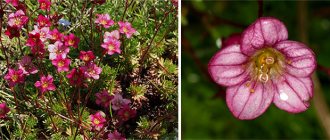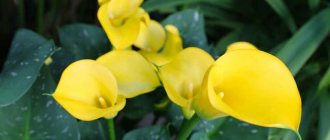- September 14, 2019
- Flowers
- KatrinGlamour
Chrysanthemum has long been and quite deservedly considered the real queen of the autumn garden. She decorates the flowerbed with her luxurious flowers until late autumn. It is thanks to its long, abundant flowering, large palette of shades and variety of varieties that chrysanthemum is extremely popular.
Many people adore these beautiful flowers, which, by the way, look equally good in flower beds and flower pots. But not everyone knows that chrysanthemums need special care when planting and growing. This is not to say that they are too capricious, but if you want the plant to delight your eyes with its beautiful inflorescences for a long time, try to take proper care of it. So, if you decide to get your own bushes in the garden, it will be useful for you to learn about the features of caring for and planting chrysanthemums.
Peculiarities
There are many varieties of chrysanthemums, each of which is good in its own way. The most popular among them are: orange-scarlet “Apollo”, burgundy “Romenta”, cream “first snow”, “lilac fog”, pink “Heba”, yellow “Svemba”, “multiflora”. But despite such diversity, the famous Korean chrysanthemum, with inflorescences reminiscent of an indoor bride flower, has been in greatest demand among gardeners for many years. In the photo you can see what Korean chrysanthemums and other popular varieties look like. As you can see, every gardener can find a plant to suit his taste: with large and small flowers, perennial and annual, variegated and muted.
As for Korean chrysanthemums, they have many advantages:
- resistance to low temperatures;
- compatibility with other plants;
- beauty;
- abundant, long-lasting flowering that lasts until the first frost.
If you start growing chrysanthemums in open ground, they will delight you with their flowering in August and will bloom throughout the fall. This plant is not afraid of frosts down to seven degrees below zero.
Residents of the northern regions mistakenly believe that chrysanthemums cannot be placed in open ground. However, in fact, these flowers winter well if they are properly prepared. To do this, you just need to cut off the stems, leaving only stumps no more than 15 cm high. Then they should be covered with peat, and covered with fallen leaves and spruce branches on top.
How to preserve flowers in winter
Gardeners practice different ways to preserve chrysanthemums in winter:
- wintering in the ground;
- digging up specimens and storing them in the basement or in the house;
- transferring flowers to specially prepared trenches.
Frost-resistant varieties will overwinter in the ground without problems. However, the crop needs to be prepared for such wintering. After pruning the shoots, the bushes are mulched with a layer of straw and covered with humus.
When the temperature drops to +5°C, the plantings are covered with pine or spruce branches.
In the spring, the shelter must be removed immediately after the frost has subsided.
When frost sets in, many gardeners dig up rhizomes and send them to the cellar for storage. The optimal storage temperature is 0-+5°C.
An interesting way to winter chrysanthemums is in trenches that are formed in advance. At the bottom of a trench 60 cm deep, you need to carefully lay the flower bushes, close to each other. With the onset of frost, they are covered with slate, a film is pulled on top, and sprinkled.
Wintering chrysanthemum "Multiflora". Several options from an experienced gardener. Video
Popular varieties
Today there are more than 150 varieties of chrysanthemums. True, domestic gardeners prefer to grow their hybrids, which are distinguished by their durability, unpretentiousness and beauty. In addition, the care and planting of different varieties of chrysanthemums are practically the same, which greatly simplifies the task of gardeners.
In general, chrysanthemums have a rather complex classification, but the most popular types can be identified:
- Korean - small-flowered chrysanthemums, the size of the inflorescences ranges from 2-9 cm;
- Indian - large-flowered plants with flowers up to 10-25 cm in diameter;
- Japanese;
- Chinese.
In addition, chrysanthemums can have different flower structures. They are:
- semi-double;
- simple;
- terry;
- hemispherical;
- anemone-shaped;
- flat;
- curly;
- radiate;
- pom-pom.
And the leaves of flowers can be reed-shaped or tubular.
In our country, it is advisable to grow beautiful, unpretentious chrysanthemums that bloom for a long time. Large-flowered varieties are used to make bouquets and flower arrangements. But for planting in the garden, it is best to choose a small-flowered variety.
- Korean variety "Alyonushka". It has simple bright purple flowers with a diameter of up to 5-6 cm. Bushes can grow up to half a meter. Alyonushka begins to bloom in September.
- Korean variety "dune". It blooms with yellow-orange inflorescences with a diameter of up to 5 cm. This chrysanthemum can grow up to 60 cm.
- Bush variety "saba". It has very original, unusual colors: the middle of these flowers is green-yellow, and the petals are painted in a red-purple hue with a white edge. Looks amazing. The inflorescences of this variety reach a diameter of 5 cm, and the growth of the bushes is 0.7 m.
- Korean variety "snowball". It has beautiful double inflorescences with a diameter of about 5-6 cm, white with pink tips. Shrubs grow up to 60 cm.
- Korean variety "Mishal". Small-flowered double chrysanthemums, the size of the pompom inflorescences reaches 4-4.5 cm in diameter. The color of the flowers is bright yellow. "Michelle" begins to bloom in September, and its bushes reach a height of 40 cm.
- Korean variety "terracotta". It has double orange inflorescences with a diameter of 5-6 cm. The height of such bushes ranges from 50-60 cm.
As you can see, the choice is quite varied. So you can easily choose a suitable plant for yourself, which will delight you with its beauty and bright colors for almost six months.
Botanical description
Among chrysanthemums there are perennial plants, and there are annual chrysanthemums, there are herbaceous species, and there are subshrubs. The rhizome of chrysanthemums is branched, developing parallel to the surface. The shoots may be bare or pubescent. Chrysanthemum leaves, arranged alternately, are simple, but different in size and shape - notched, jagged, dissected - may also be pubescent, or may not be. The leaf color is usually light green, although it can be dark.
Small flowers are collected in a basket, sometimes quite large, usually consisting of single-row tubular middle and reed-shaped marginal flowers, although in many hybrid varieties the flowers are arranged in multi-rows, forming a dense inflorescence called double chrysanthemum. The fruit of a chrysanthemum is an achene. The culture uses species and varieties of the so-called garden chrysanthemum, or mulberry chrysanthemum. Sometimes it is called Chinese chrysanthemum. This is a complex group of varieties and hybrids, their history is quite confusing.
How to grow chrysanthemums in the garden
Keep in mind: these flowers do not tolerate moisture retention and even the slightest darkening very well. So chrysanthemums should be planted in a sunny, preferably slightly elevated place. This way you will be sure that the flower shoots will not stretch too much and will not begin to bloom earlier. Just remember that you should never allow the soil to dry out, since this plant has a shallow root system.
The ideal option would be to grow chrysanthemums in loose, permeable soil. Moreover, the ratio of nutrients in it should be optimal. So, if your site is dominated by infertile dense soil, before planting chrysanthemums it should be fertilized with compost, peat or rotted manure.
But you shouldn’t overuse useful additives: they will grow faster, but their flowers will not be as beautiful. It is very important to provide chrysanthemums in the garden with good drainage. To do this, mix the soil with a small amount of coarse sand. These flowers grow best in a slightly acidic and neutral environment.
Planting chrysanthemums should be planned for a rainy or cloudy day. If the weather outside is sunny and hot, try to plant the cuttings in the ground early in the morning or late in the evening, when there is almost no sun.
How to grow chrysanthemums? First of all, dig holes 35-40 cm deep, fill them generously with water and place the prepared drainage inside. Before this, it is advisable to mix it with vermicompost in a ratio of 20 to 1. Then place the cuttings in the holes and carefully cover them with earth. Since the roots of chrysanthemums extend parallel to the ground, they cannot be placed very deep. If you choose a tall variety of flowers, be sure to consider creating a support for them.
Immediately after planting chrysanthemums, the first pinching should be done - cutting off the growing point from the flower. After three weeks, you will need to do another pinching - break off the top of the shoot, on which several nodules have formed.
How to grow chrysanthemums in the garden? In the first days after planting, it is necessary to organize artificial shade for the seedlings, because at this time bright sunlight is contraindicated for them. For this, it is best to use non-woven material. In this case, the canopy should not touch the cuttings.
Application in landscape design
Compositions from chrysanthemums (Flower Festival).
Photo from pixabay.com Chrysanthemums can decorate any area and create a unique landscape design. Popular varieties used for decoration:
- flower beds in the garden;
- terraces, balconies;
- at home – cut flowers last a long time in a vase.
Chrysanthemum is an autumn flower. At this time, she is able to decorate any flowerbed and maintain its decorative effect until the onset of winter. The ice crystals shimmering on the petals give the flowers a special charm.
Reproduction methods
How to grow chrysanthemums? If you plant them with seeds, you will not preserve the variety, so it is best to use one of the other possible methods:
- dividing bushes;
- cuttings;
- separation of root shoots.
Chrysanthemums can be planted and replanted only in the spring, preferably in May, when there are definitely no frosts or sudden cold snaps. If you postpone the planned event to the beginning of summer, the flowers will not suffer one bit.
If you bought planting material at the beginning of autumn or at the end of summer, do not delay planting. Try to plant the plants in open ground no later than September 15th. Otherwise, before the onset of frost, the roots of chrysanthemums simply will not have time to grow stronger. If you missed this moment, do it differently: just cut the cuttings and place them in indoor pots until the weather warms up.
Just place the flowerpots in a dark room with a low temperature of about 4-6 degrees, which will not change until spring. For example, a heated terrace or loggia may be suitable. Throughout the winter, all you need to do for maintenance is to periodically water the plants.
At the end of February, chrysanthemums can be moved to the greenhouse. There they will need to be watered much more often. And by the end of March, when the seedlings have grown, it will be possible to make cuttings by cutting off shoots up to 10 cm long.
Cut cuttings should be placed in a box with soil, humus and sand and covered with glass. It usually takes a month for plants to develop their root system, after which they can be transplanted into open ground.
How to reproduce?
To propagate chrysanthemums, you can use seedlings, seeds and cuttings, depending on the variety. Seeds can be sown in May directly into the ground. For sowing, make holes at a distance of 25 cm from each other and place 3-4 seeds in them. In this case, flowering will begin in August. Do you want to admire blooming chrysanthemums already in June? Then you'll have to tinker with the seedlings! In March, we sow the seeds in boxes with soil and place them in a heated room. When the seedlings grow up, we pick them into pots and plant them in the ground at the end of May. In a month our chrysanthemums will bloom!
To obtain cuttings in the fall, after chrysanthemums bloom, the best specimens can be left in pots for the winter as mother plants. We cut off the faded shoots close to the ground in the pot, as they die after flowering. We leave the cut chrysanthemums in pots in cool rooms. We water the plants little, just so that they do not wilt. We take cuttings for planting in March from the apical shoots emerging from the ground from the roots.
We cut the cuttings with a sharp knife at an oblique angle to get a smooth cut. In this case, rooting goes better. We plant them in pots or boxes. We prepare the substrate as follows: add humus and peat as the bottom layer and sand as the top layer. After planting, spray the cuttings and cover them with a glass cap. The best temperature for rooting is +13-15 °C. After rooting (after 18-20 days), remove the glass. We plant young plants in individual pots and place them in a cool, well-ventilated room.
The easiest way to propagate chrysanthemums is by dividing the bush. In the spring, when the return frosts end, we dig up the bush and divide the young shoots. We immediately plant the shoots with roots in the garden and water them.
How to care for chrysanthemums in the garden
These flowers need special care. It is very important to control the watering regime of plants. Despite the fact that chrysanthemums are quite moisture-loving, it is also impossible to water them too often and abundantly, so that the root system does not begin to rot. You can often water flowers only during dry seasons, otherwise the stems will become crusty and the inflorescences will stop blooming beautifully. Chrysanthemums also need to be watered frequently until they bloom. It is best to use rain or settled water.
The volume of liquid depends on the characteristics of the plants. Thus, flowers with small, hard leaves should be watered less frequently than bushes with soft, large leaves that evaporate a lot of moisture. During planting and caring for chrysanthemums, a lot of water will be required. If you do not water the plant in a timely manner, it will quickly shed its buds and you will never see its beautiful flowers. So don't be lazy.
In addition, chrysanthemums are very fond of nutritious feeding. Gardeners prefer to pamper their seedlings with mullein infusion in a ratio of 1:10. Before the first buds appear, it is best to feed the flowers with phosphorus and potassium fertilizers - such additives allow you to achieve lush, abundant flowering. Some gardeners use nitrogen mixtures to feed chrysanthemums, which promote the growth of leaves and stems.
But before flowering begins, you should not add fertilizer to the soil. When feeding plants, be sure to ensure that the solution does not get on the stems and leaves - it can burn them. You only need to water the flowers at the roots.
For improved development of chrysanthemums in the garden, provide them with a balanced diet for the first few months - during this period, active growth of green mass occurs. It is best to use chicken manure and mullein. But remember: if you overfeed the plant, you will harm it much more than if you underfeed it.
Caring for chrysanthemums in the garden also involves forming a bush. Remember to trim and pinch it regularly. For the first time, the top of the flower should be removed immediately after planting, and the second time - when the shoots on the sides reach 10 cm. Then the bush should remain untouched until flowering.
During the period of active flowering, caring for chrysanthemums in the garden involves regularly removing wilted and dead buds. This way you can significantly extend the flowering time.
If you want large flowers, you can completely cut off the side shoots. As a result, only one stem and one peduncle will remain on your bush. The plant will use all its strength to grow and form a flower.
Wintering chrysanthemums
Most species and varieties of chrysanthemums tolerate winters of temperate climates quite easily. However, large-flowered and tall species are not very prone to this, so to preserve them, it is recommended to dig them up for the winter.
Such plants will need to be planted in a separate wooden box filled with the same soil that the plant was in outside. A wintering period for these species is also needed, but it is more gentle, so place this box in a cool room (about + 5 ° C) with high humidity (about 80%).
Water them occasionally, but don't over-water them. The lump of earth should always be moistened, but only slightly. There is no need to waterlog the ground.
You can also store chrysanthemums in the cellar. Here you will have to carefully dig them up so that a lump of earth remains on the roots of each plant. Ideally, to do this, water the plant first.
Question to the expert
What is better, digging up a chrysanthemum for the winter or leaving it outside?
Everything will depend on the type and variety of chrysanthemum. It is better to dig up the tall and large-flowered ones, but the rest can be left, having previously been insulated.
Preparing for winter
In order for your chrysanthemums to bloom as profusely and beautifully next year, you should make sure that they overwinter well.
In the fall, when flowering ends or before the first frost, the plant should be fed with phosphorus-potassium fertilizer, cut off the stems, leaving 10-15 cm from the soil and covered. Pruning helps prevent the flowers from rotting and the development of harmful ridges on its stems. You can use spruce branches or mulch with leaves as shelter.
But chrysanthemums with large inflorescences are afraid of frost, so before the cold weather they need to be dug up along with the roots and placed in a pot. Until the next planting, flowers should be stored in a room with a temperature of 0-5 degrees. Caring for them during this period comes down to watering the soil, which should not dry out.
Why doesn't chrysanthemum bloom?
Any chrysanthemum should bloom in the fall. This law can only be violated if there are errors in caring for the plant. The most common of them are:
- Poor illumination (low intensity of light rays, too long (more than 10 hours) or, conversely, short (less than 7 hours) daylight hours).
- Late pruning (pinching).
- Poor soil and lack of fertilizing (containing phosphorus and potassium).
Eliminate the errors found and your potted chrysanthemum will definitely thank you with lush and long flowering.
Fertilizer recipe for garden chrysanthemums
To prepare healthy fertilizer, you need to take a large container and pour two buckets of mullein or one bucket of chicken manure into it. Then fill it with water and stir well. Leave the resulting solution in this form for three days.
Separately prepare the second part of the fertilizer. Mix a liter of concentrated infusion with 10 liters of water. Finally, combine both parts of the mixture and mix thoroughly. To feed, each plant needs a liter of this solution, which should be poured under the root. Just be sure to moisten the soil before doing this.
Fertilizer and feeding
Chrysanthemums bloom profusely, so they need high-quality fertilizer throughout the growing season. To increase decorative flowering and disease resistance, it is recommended to feed the bushes from the first year after planting.
In the spring, for active growth, it is advisable to fertilize the plant with nitrogen-containing fertilizers. For these purposes, an organic infusion is best suited: cow, horse, rabbit manure or bird droppings.
Preparation of fertilizer for growing chrysanthemums:
- Manure or bird droppings are diluted with water in a 1:2 ratio, the resulting mixture is left to ferment in the sun, stirring occasionally.
- After 3 – 7 days the fertilizer is ready for use. For irrigation, use an infusion diluted with water in a ratio of 1:10 from manure or 1:20 from bird droppings. For each bush you need to apply 1 liter of the resulting fertilizer.
On a note! Chrysanthemums should be watered twice a month. This type of fertilizer allows the plant to grow lush green mass. Nitrogen-containing fertilizers can only be used until mid-summer.
Chrysanthemum with rich bright pink inflorescence
During the period of bud formation, in addition to organic matter, it is advisable to apply potassium-phosphorus fertilizer:
- phosphorus:
- bone or blood meal;
- fish flour;
- potassium sulfate;
- potassium magnesia;
- potassium sulfate.
For quick absorption, fertilizing is applied in the form of a solution to the root area, after watering the bushes. This type of fertilizer is applied throughout the season.
If the chrysanthemum is planted in damp soil (after rain), you should not water it in the next 2-3 days
Recommendations from gardeners
After planting, caring for chrysanthemums is actually quite simple. It consists in:
- regular watering;
- periodic loosening of the soil;
- weeding;
- periodic spraying with pest control solutions.
Chrysanthemums tolerate cold quite well, but still they also require insulation. Around the end of October, flower beds should be protected from the first frosts using a frame with plastic film stretched over it. Thanks to this shelter, you will be able to watch the beautiful blooming chrysanthemums that you planted in the spring for at least another month. True, at the end of autumn the frame will still have to be removed, and the flowers transplanted into pots and sent to a warm veranda until April.
In general, as you can see, growing chrysanthemums in the garden is not so difficult. To do this you will need a minimum of knowledge, time and effort. And if you are no longer a beginner in gardening, then you can easily cope with this plant. If you previously had an indoor flower bride, caring for a chrysanthemum will not be difficult for you. After all, these plants are very similar to each other. The only difference is that the bride grows in a pot, and the chrysanthemum loves open ground.
Home care
For all representatives of the genus Chrysanthemum, it is necessary to comply with growing conditions: lighting level, temperature and watering.
The best place to place a flower pot will be east or west windows. If grown on the south side, the flowering period will be shortened, the foliage will get burned and the plant will lose its attractiveness. The north side is not suitable, as due to the lack of natural light, flowering may not occur.
The duration of daylight hours should be 9-10 hours. To provoke chrysanthemum flowering in summer, after 9 hours you will need to cover the plant with a cardboard cap or put it in a closet.
In addition, chrysanthemums need coolness to bloom. In spring, you can place the pot with the crop on the balcony. In this way, repeat flowering can be achieved.
In summer, for chrysanthemums, it is recommended to maintain the temperature at +21-23°C, in autumn – +15-17°C, in winter – +3-8°C. Compliance with the temperature regime will have a positive effect on flowering - chrysanthemums gain a large number of buds and bloom for a long time.
It is important to water your house plants on time, avoiding excessive waterlogging of the soil. The next watering should be carried out after the top layer of soil has dried. You can increase air humidity by regular spraying.
Chrysanthemums can last up to 14 days in a bouquet without losing their attractiveness.
Chrysanthemum is a symbol of good intentions and sincerity.
Read about which flowers are suitable for a bouquet and what they symbolize here.
How to care for a chrysanthemum in a pot. Video
How to control pests
As you already know, moisture-loving chrysanthemums simply adore watering and cannot do without it, especially during dry seasons. And regular irrigation prevents the occurrence of mites and aphids that do not tolerate water.
But still, watering alone is not enough to eliminate all kinds of pests. After all, many pathogens and pathogens live in the soil. So after rains, plants should be treated with special preventive solutions, the most popular of which are Previkur and Quadris.
Thanks to “Fitosporin” you can protect your chrysanthemums from root rot. This product just needs to be added to the water before each feeding.
Chrysanthemums in the garden are threatened by all kinds of street dwellers and diseases.
- Spider mite. An insect that sucks sap from plants. You can find it on the web on the back of the leaves. If the leaves of a flower turn gray-brown, begin to darken and fall off, most likely they are being hunted by spider mites. In this case, the plant should be treated with special chemicals, such as “Aktellika”, “Iskra.” or "Rabitora".
- Leaf nematodes. These pests can be identified by painful deformations of the leaves and darkening of the veins. In such a situation, gardeners recommend changing the soil and cutting off damaged areas.
- Verticillium. An infectious disease that penetrates a plant through the root system. With this disease, the first thing that happens is the leaves located below begin to turn yellow and wither. If you identify the problem in time, spraying with special preparations, such as Fitoverma and Aktara, will help solve the problem.
- Powdery mildew. First it affects the buds and leaves, on which a strange white coating appears, and then gets to the roots. In this case, you should cut off the damaged areas and treat the plant with Bordeaux mixture.
- Caterpillars. They are considered the most dangerous garden inhabitants for plants. Only one caterpillar can eat several buds per night. That is why it is so important to regularly inspect the flowers, eliminating various pests.
Diseases and pests
Diseases
If you do not adhere to agricultural practices or there are dense thickets of chrysanthemums in your flowerbed, then the risk of them being affected by a fungal disease increases:
- Verticillium wilt . The fungus first enters the root system of the plant. After a while, the foliage of the affected bush turns yellow and the shoots die off.
- Powdery mildew . In a diseased plant, a whitish coating appears on the surface of the foliage, stems, flowers and buds.
- Rust . In the affected chrysanthemum, chlorotic spots form on all its above-ground parts; after a while they become brown, and yellowing of the foliage and thinning of the shoots are also observed.
- Gray rot . Brown spots with blurred edges form on the plant, on the surface of which after some time a fluffy coating appears, which causes rotting.
In order to cure flowers affected by a fungal disease, it is recommended to use products that contain copper, for example, copper oxychloride is very effective in the fight against gray rot, septoria and rust. You can still get rid of rust using colloidal sulfur and copper-soap emulsion, and Bordeaux mixture is used in the fight against gray rot and powdery mildew. For preventative purposes, be sure to provide good care for the flowers, adhere to the rules of agricultural technology and do not allow the plantings to become thicker. Also, regularly inspect the bushes, as this will help identify symptoms of the disease at an early stage.
In some cases, such a plant can infect a very dangerous viral disease:
- Mosaic . A mottled mosaic appears on the surface of the foliage.
- Aspermia . The flowers of the affected bush are deformed, and the foliage becomes speckled.
- Dwarfism . A diseased plant is stunted and blooms prematurely.
All of these diseases today are incurable, therefore, after discovering a diseased bush, it must be removed from the site as soon as possible and burned. For preventive purposes, do not allow harmful insects, which are the main carriers of viruses, to appear on flowers, and also use a sterilized sharp instrument to cut cuttings or divide the bush into parts.
White chrysanthemum rust (Puccinia horiana Henn.)
Pests
Of all insects, nematodes most often damage crops. If they live on a bush, then mosaic spots form on its foliage, and after a while their color becomes darker. It is impossible to get rid of such a pest; only preventive measures will help. To do this in the fall, when transplanting, planting or digging up a bush, it must be treated with Phosfamide, and the soil near it must be sprayed with Formalin. All infected plants must be dug up and burned.
Aphids, which live on the lower surface of the buds and leaf blades, can also harm the chrysanthemum. Both adult insects and larvae feed on plant sap, which they suck from the bush, this leads to a slowdown in its growth and flowering. If there are few aphids on the plant, then they are simply destroyed along with the torn leaves. If there are a lot of pests, then the bush will need to be treated with a solution of Aktara or Aktellik, to which laundry soap is added.
The meadow bug can also settle on flowers, the adults and larvae of which also feed on plant sap. Because of this, the buds do not open, and the foliage becomes stained, turns brown and dies. To save the bush, it is treated with a solution of baby shampoo (1 tsp per 1 bucket of water). For preventive purposes, plants are sprayed with Phosfamide.
Gastropods (slugs and snails), which eat both flowers and foliage and shoots, can also greatly harm the chrysanthemum. It is recommended to combat them using gentle methods, otherwise you can disrupt the ecosystem of the garden plot, where such gastropods perform an important sanitary function. In this regard, it is better to resort to preventive measures: the correct combination and selection of crops, natural control of the number of snails and slugs by attracting birds, etc. If pests have attacked chrysanthemums, then you can collect them manually, dig plastic into the ground near the bushes rims that prevent slugs and snails from getting close to the flowers. You can also cover the surface of the soil with a thin layer of crushed eggshells, and you can also place bowls filled with beer near the flowerbed in several places; pests will definitely crawl onto its aroma, which will only have to be collected. There are also many other ways that will help protect plants from voracious gastropods.











